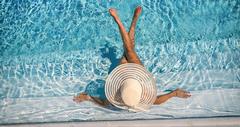The Calusa Nature Center and Planetarium is a privately run environmental education organisation situated in Fort Myers, Florida. The not for profit organisation is located on a site which fills 105 acres. The site contains the Audubon Aviary, a butterfly aviary, gift shop, Planetarium, Iona House, the Natural History Living Museum and McNew Pavilion.
There is also the Pine Pavilion, picnic areas outside and two nature trails as well as the Cypress Swamp Boardwalk. The animals which can be seen are the permanently injured birds in the Audubon Aviary, reptiles, a raccoon, a fox, alligators, amphibians, arthropods and butterflies.
Public and private events are held at the center as well as monthly shows. Special programs and club meetings are regularly held at Iona House, the centers classroom which was previously a school. The center is open daily. Admission fees apply for adults and children over 2 years with discounts offered to seniors, college students, military personnel and AA and ANCA members. Groups of children such as school or scout groups can also receive discounted admission with pre registration.
Exhibits
The Calusa Nature Center and Planetarium has a host of attractions and facilities on site. The Natural History Living Museum is one of the main attractions and acts as both a nature center and a museum. The exhibits within the museum have a key focus on Southwest Florida’s nature and past history. Displays come in the form of information plaques, interactive displays and live animal exhibits. Interpretive displays show the effects of bad water quality on the ecosystem within it centering on the endangered species of manatees. Exhibits on fossils, crocodiles, birds of prey, native snakes and alligators are displayed with live exhibits of iguanas, snakes, turtles and tortoises. There is also a live Insectarium exhibit. A daily presentation takes place in the center so visitors can learn about the resident animals and see them face to face. Visitors can touch the animals in the presentation. Some of the resident animals used are a 17ft python, a bald eagle, a skunk, an owl or a tortoise.
With the information learnt from the museum, visitors walk across the Cypress Swamp Boardwalk outside of the center, taking in all of the plant and animal wildlife along the way. At points during the route, information can be read in the form of posters which highlight facts about the surrounding area. The two nature trails are also available to walk around with the option of self guided tours or guided tours by plant and wildlife experts. The tours take groups through the marshy lands, grassy expanses and forest.
In the grounds visitors can also go inside the Audubon Aviary where a whole range of birds of prey are permanently housed. The birds are cared for in the vicinity and can be viewed in their enclosures. There are owls, bald eagles, hawks and vultures in the aviary as well as other birds. Nearby is the butterfly aviary where visitors can see different types of local butterfly in between the plants and flowers. Other animals to see outside are the two large alligators by the bridge that leads to the Planetarium. The alligators are a mated pair and measure 8ft and 12ft respectively.
A popular attraction on the grounds is the Planetarium which has three daily shows and monthly special shows. Inside is a stage, state of the art sound system, dome theater and lobby. Opened to the public in 1986 the Planetarium has seats for 76 people as well as 3 spaces for wheelchair users. The structure of the dome measures 44 feet in diameter with the inbuilt projector and system able to show projections, DVDs and blu rays for an immersive experience. The Planetarium has a large telescope which enables detailed viewing of the solar system with visitors being able to see the ‘live sun’, sunspots and stargaze.
Ongoing Programs and education
The Calusa Nature Center and Planetarium has many monthly events and programs which run throughout the year. On weekdays there are pre school classes where children and their families can meet the animals and see a show in the Planetarium alongside an educator. For older children and teens the Junior Naturalists Program encourages those interested to go to the center to take part in activities about nature and the environment. The center also hosts short holiday camps for children, regular adult hikes for keen walkers and volunteer work days. Visitors can check the websites under ‘Programs’ to find out accurate information.
Back to: Best Things to Do on Sanibel Island, FL
3450 I Av, Fort Myers, FL 33905, Phone: 239-275-3435, website, Map





